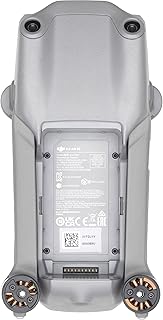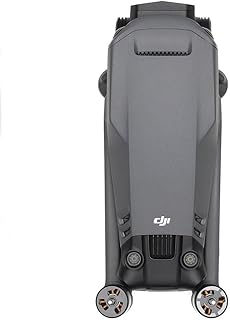The Future of Drone Technology: A Look Through the RotorLogic Lens
The RotorLogic drone, while a fictional entity, allows us to explore a fascinating future of drone technology. To do this, we'll need to make some assumptions about its capabilities. Let's imagine the RotorLogic drone boasts advanced features like:
1. AI-powered Autonomy:
* Adaptive Flight: The drone can navigate complex environments and react to unexpected changes, utilizing AI to avoid obstacles and optimize flight paths.
* Mission Planning: Users can define intricate missions, like package delivery, surveillance, or inspection, and the drone will autonomously execute them with minimal human intervention.
2. Enhanced Propulsion and Design:
* Advanced Propellers: Optimized for quiet operation and efficiency, allowing for longer flight times and increased payloads.
* Vertical Takeoff and Landing (VTOL): The ability to take off and land vertically, enabling access to tight spaces and limited landing zones.
3. Integration with Smart Systems:
* Cloud Connectivity: Real-time data transfer and control through a secure, cloud-based platform, facilitating remote operation and data analysis.
* Interoperability: The drone seamlessly integrates with other smart systems, like IoT devices and autonomous vehicles, enabling collaborative applications.
With these capabilities, the RotorLogic drone can usher in a future with:
1. Revolutionized Delivery:
* Last-mile delivery: Delivering packages directly to customers' doorsteps, even in remote locations, improving efficiency and reducing delivery times.
* Medical drone delivery: Transporting critical medical supplies and even delivering blood samples, making healthcare more accessible in underserved areas.
2. Enhanced Safety and Security:
* Emergency response: Deploying drones for search and rescue operations, providing real-time information and aiding in disaster relief efforts.
* Security surveillance: Monitoring critical infrastructure, detecting illegal activities, and providing aerial reconnaissance for law enforcement.
3. Advancement in Industry and Agriculture:
* Infrastructure inspection: Inspecting bridges, power lines, and other critical infrastructure for potential damage, ensuring safety and minimizing downtime.
* Precision agriculture: Analyzing crops for health, optimizing irrigation and fertilization, and monitoring livestock with real-time data.
4. New Horizons in Exploration and Research:
* Scientific exploration: Gathering data in remote and hazardous environments, contributing to research in fields like geology, meteorology, and wildlife conservation.
* Environmental monitoring: Tracking air quality, measuring pollution levels, and detecting environmental changes to aid in conservation efforts.
Challenges and Considerations:
* Regulation and Privacy: The widespread use of drones raises important questions regarding regulations, airspace management, and data privacy.
* Security and Hacking: Protecting drone systems from cyberattacks and ensuring secure data transmission are crucial for maintaining trust and reliability.
* Ethical considerations: Addressing potential biases in AI algorithms and ensuring responsible use of drones to prevent misuse.
The RotorLogic drone, as a hypothetical example, highlights the vast potential of drone technology. As the technology continues to evolve, we can expect even more advanced capabilities and diverse applications that will reshape our world in exciting and impactful ways.


